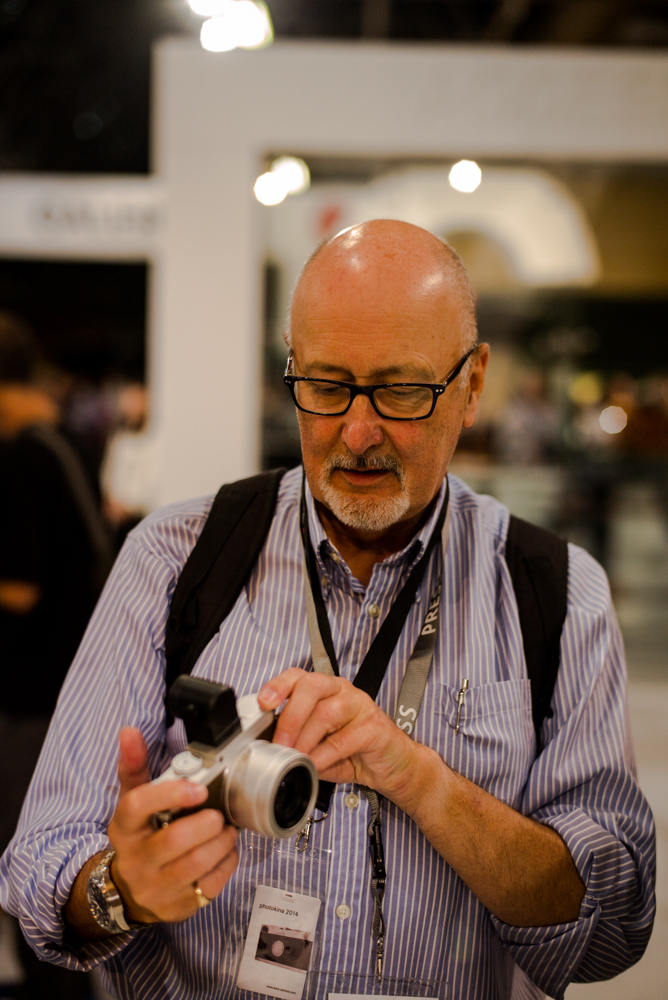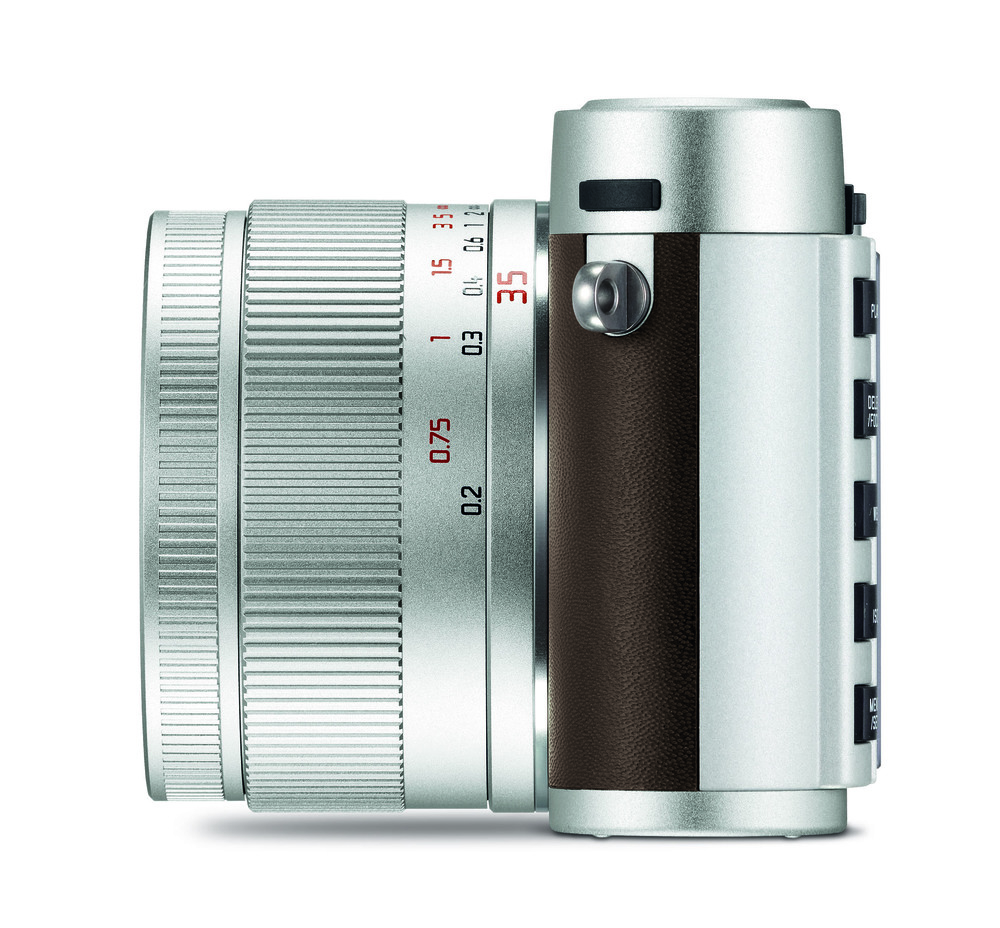The new X was another surprise this week. I had heard rumours of an X2 replacement with a faster lens but assumed it would follow X1 and X2 format. Instead it is a masterful rework of the X Vario.
The X Vario is a camera I liked very much when I reviewed it last January. I didn’t even mind the starting aperture of f/3.5 in contrast with those who condemned the camera out of hand because of its slow lens. Image quality is superb and it is a thoroughly competent little camera.
So I was pleasantly surprised to find the new X to be in effect an XV (or, as the publicity message had it, a mini M) but with a fast fixed prime. It was also positive to find the ageing VF-2 viewfinder replaced by the high-resolution large-screen Visioflex from T.
I had a short time to get acquainted with the new X during Photokina. First off, I should say that this is a great looking camera, more the mini M than some critics would allow. It looks seductive, too, in the silver trim with that silver lens. Unfortunately, as ever, the pretty looks are spoiled by the big black viewfinder in the hotshoe. The Visoflex ought to be available on silver as well as black for those who choose the prettier silver camera. It is fortunate that the Visioflex performs a lot better than it looks.

The camera handles well. It is well balanced, helped by the lighter lens and feels just like a lighter X Vario. The controls are simple, a typical M-like touch, and the menu is a model of simplicity. But I was keen to check out the operation of the four-way pad since this is acknowledged to be a problem with the X Vario. It is in the same lower right position as on the Vario and it is appears to be equally vulnerable to inadvertent operation with the ball of the right thumb. It does seem to me, though, that the pad has been reworked and no longer feels as trigger happy as the one on the XV. Nevertheless, it wasn’t long before I was touching it by mistake and going into exposure compensation. (UPDATE: The latest firmware update disables the troublesome flash button unless the flash is raised. However, as I said, the exposure compensation button is still capable of causing bother)
I suspect this control pad will be a mixed bag ― somewhat better than the X Vario but still not perfect. It is disappointing that more hasn’t been done to cure this annoying feature. I asked Stefan Daniel if there were plans to allow the four-way pad to be locked or disabled, as is possible with Sony and Fuji cameras, but he did not think it was part of the latest firmware fix which also applies to the XV.

The f/1.7 Summilux lens is decidedly handsome beast, looking very similar to the 23mm Summicron-T launched earlier this year. The focus ring is smooth and well damped, as you would expect from Leica. The aperture ring is identical to that of the XV, with a detente between manual and auto. This is one of my favourite layouts and I remember it from the old Digilux 2.
However, I tried two cameras and on both the movement over the detente between manual and autofocus was rather rough and stiff, quite unlike the smooth and precise operation of the XV’s ring. It could be that the show cameras were pre-production models but it is something I intend to check when I get a production model for test later this month.
One disappointment is the lack of a depth of field scale. It is highly useful on a prime lens (as on all M lenses) and I think Leica missed a trick here. Incidentally, the X uses the same screw-in hood as the X Vario, so if you intend to replace your XV with the new camera it is worth hanging on to this rather expensive accessory.
Overall I am very impressed by this new camera. There can be no criticism on aperture this time round and I expect the performance of the lens will be up to that of the Summicron-T and, as Leica will undoubtedly say, be comparable with the 35mm Summilux. It has stiff competition from the likes of the new Fuji X100T but, in its favour, the X is perhaps a more focused camera with its emphasis on manual controls and simple menus. It is more the sort of camera to appeal to an M user as a second, versatile travel device.
Finally, price. At £1,550 in the UK, the X is something of a bargain by Leica standards. It is only £200 more than the T body but you get a Summilux lens thrown in almost for free. You lose that 45 minutes-worth of Portuguese polishing, of course. Still, unless you really must have interchangeable lenses, the X will be a very sensible choice.
Read more camera reviews by Macfilos


Better price than the X Vario and seems to offer better value. I still don’t understand why Leica cannot include a viewfinder in the body. It’s a no brainer and it’s what people want these days. Nobody liked hot-shoe EVFs any more.